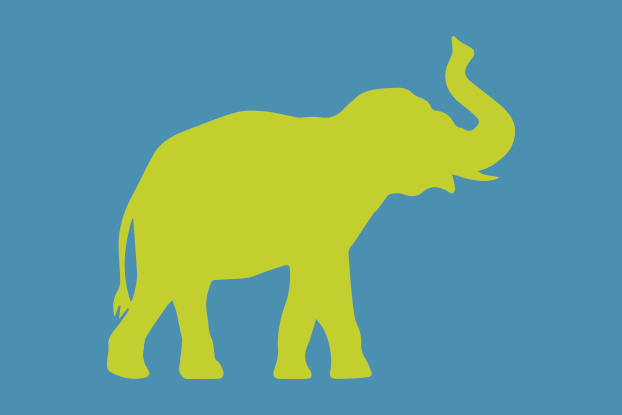 Your board of directors has selected a new leader for your organization. Smart and dynamic, the leader sends a jolt of energy through the company.
Your board of directors has selected a new leader for your organization. Smart and dynamic, the leader sends a jolt of energy through the company.
A few months later, a memo arrives announcing an organizational redesign.
The goals aren’t well defined, but you’re determined to support the change. Your employees, customers and vendors express frustration and ask why the change is happening. You aren’t sure, but you respond as well as you can to move everyone forward in an uncertain direction.
If this scenario sounds familiar, you’re not alone. More than 75 percent of organizational redesigns fail to deliver the intended results, a 2015 McKinsey report showed. Redesigns can lift performance, but they require time, energy and collective will to succeed. When organizations beat the odds, it’s usually because they’ve thought holistically and engaged their team through a full change management process. In short, successful organizations embrace the adage, “You have to go slow to go fast.”
Begin with the End in Mind
As the rate of change accelerates, many organizations are rethinking their designs to help them move faster. One size doesn’t fit all, but the trend is toward flatter, more decentralized organizations that adopt a “team of teams” approach. This type of design can deliver greater speed, innovation and agility by allowing interdisciplinary teams to form and reform in response to organizational needs.
If speed is the desired outcome, then why approach organizational redesigns at a more deliberate pace? Because a redesign involves more than just moving boxes on an organizational chart. In fact, changing your structure may be the final step you take after you assess how the building blocks of your company, which include your people, systems, processes, technology and more, help you execute your strategy. The way you fit those components together is what we mean by organizational design.
Time in the Trenches
At SageRiver, we review your design as one factor in the strategy process. Before recommending changes, we collaborate with you to explore points of light and pain within the organization. For example, we look for efficiency gains, innovation centers and leadership approaches that improve performance. We also consider resource constraints, process gaps and misalignments that hamper your team.
By digging deep and listening carefully, we discover whether evolving your organizational design will help you to realize your strategic vision.
This process involves engaging leaders, employees and stakeholders from all facets of your organization. In addition to asking for their insights, we’re gauging how ready they are for change, using the ADKAR model developed by Jeff Hiatt at Prosci. In the early stages, we assess whether your team sees the need for change. Later, we evaluate what information, tools, training and reinforcement they need to make the desired changes.
Bite by Bite
Although organizations are often tempted to jump right into restructuring their organizations, redesigns work best if you tackle other elements first. For example, if you plan to transition to a flexible team-based structure, it’s important to ask questions such as:
- Have your employees fully understood and embraced your vision, mission and values?
- What steps could you take to help your leaders be effective guides, facilitators and coaches, rather than top-down managers?
- How would you describe your culture in terms of your approach to developing employees? Is feedback offered continually at all levels of your organization and welcomed as an opportunity for growth?
- What internal tools, structures and coaching resources can you offer to facilitate effective collaboration?
- How do you share individual and team goals and track progress in achieving them? (Transparent accountability is key to helping teams understand how responsibilities and activities align.)
- What mechanisms do you have in place to evaluate, reward and advance employees within a flexible team(s) environment?
As you consider those questions and more, you’ll understand how much foundational work a successful redesign requires.
It’s the rare organization that can “eat the elephant” all at once. Successful organizations eat the elephant bite by bite through a series of small snacks.
Welcome Back, Kotter
If this process rings a bell, it’s because it draws on the stages outlined in John Kotter’s change model. One of his key insights was that change must be approached as a shared journey toward a compelling future.
As you begin your journey, it’s important to start with manageable pilot efforts, which you can test, refine and retest before implementing them across the organization. The reason for this is simple: Broadscale change involves big risks and can spark mistrust and resistance if it fails. By focusing first on smaller changes that deliver value, you can invite input from your team as you go and engage them in creating an organization that works for everyone. As you celebrate wins along the way and work together to make improvements, you’ll build trust and ownership and create an accelerating snowball of change. (Kotter’s See-Feel-Change framework, which he outlines with co-author Dan Cohen in their book, “The Heart of Change: Real-Life Stories of How People Change Their Organizations,” describes why this approach is so effective.)
Evolution Revolution
This approach to organizational redesign is a far cry from the old way, in which leaders huddled with a few people and then imposed a new structure on the organization. That top-down approach matched the top-down structures that characterized an earlier economy.
In the workplace of the future, which demands greater speed, agility, engagement and innovation, the process must fit the type of organization you hope to create. If your vision is of an organization that evolves constantly to meet the changing demands of the marketplace, then you must take a revolutionary approach to change by inviting your team to help design your future.
To find out more about SageRiver’s strategy development and organizational design services, contact us today.




